This is a replication of something done by one of the members of the
testatika Yahoogroup. It modifies two sectors of a Wimshurst machine
to act as the capacitor(s) of an LC resonant circuit with a coil wrapped
around the pulley shaft. This
Wimshurst machine was used.
First rectangular pieces of acrylic were
taped onto sectors on opposite sides of one of the disks. This is done
on the outer face, so they are taped directly onto the foil sectors. These
are the capacitor's insulators. Sitting on the disk you can see the two
pieces of aluminium tape that will be the other capacitor plates.
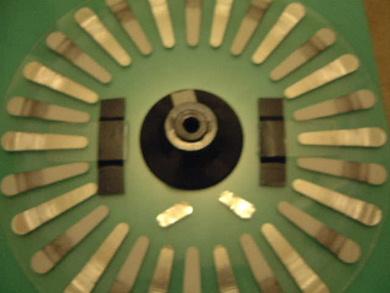 |
|
Then 48 turns of #26 enameled wire was wrapped around
the pulley with one end extending out onto each acrylic insulator. The
wire ends were sanded bare.
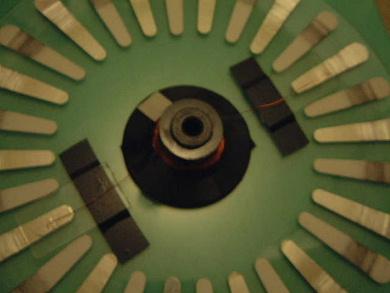 |
|
Each end was looped and then pieces of aluminium
tape were taped firmly on top to act as the second plates of the capacitors.
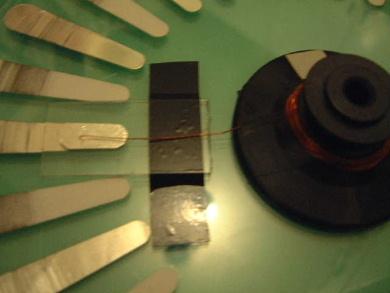 |
|
A piece of black electrical tape was then
added over each capacitor to insulate them.
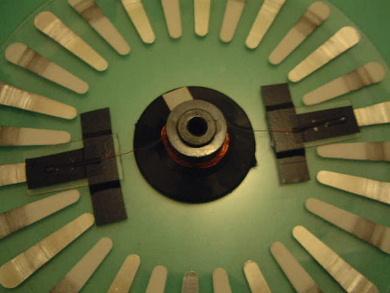 |
|
The test setup consisted of the Wimshurst machine, a
radio capable of AM, FM, SW1 and SW2, and an oscilloscope.
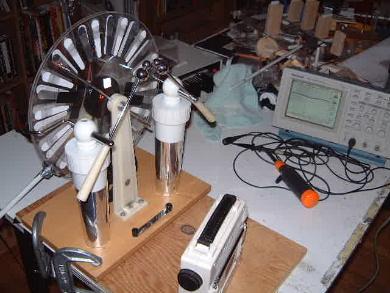 |
|
A closeup of the disk in place.
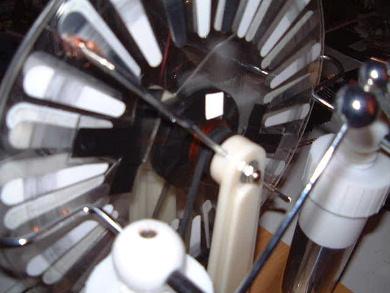 |
|
Test results
Whenever the disk was rotated, static was heard on AM, SW1 and SW2 but
not on FM. At the highest end of SW2 the static came through almost
as clicks. The output on the oscilloscope in the picture below shows
that the signal was very noisey, however, it seemed to be interacting
with the oscilloscope's probe as some sort of amplifier as the central
peak below would grow more as long as the disks were turned but no
matter what frequency I set the oscilloscope to, I could not get
more than one peak, just the central one and the noise around it.
Note that I did not set up any antenna for the scope; I just left
the probe sitting on the table.
Click on the following for the video (800K). Turn
up the volume to hear the hiss while the disk is turning.
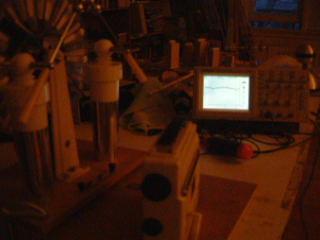 |
|
You may need QuickTime to view it. If you don't have QuickTime you can
download it
here.

